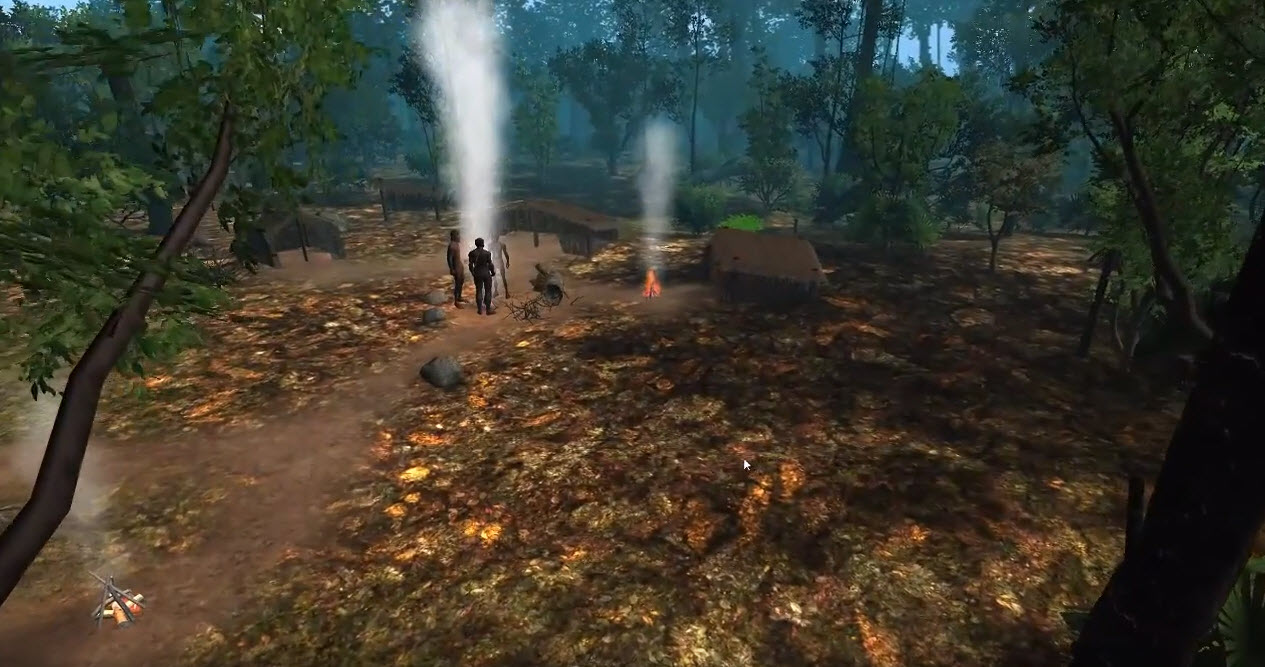- About Us
- People
-
Projects
- - Current Projects
-
- Past Projects
- - Book History Manuscripts
- - Mama and Papa in Indigenous Australia
- - Mapping Co-Lexification Patterns in Sahul
- - Palmerston Island Social Networks, Linguistic Variation and Language Change
- - Mapping Currents of Change and Exchange in the Pacific
- - Aboriginal Dreaming
- - Uruk 3000 BC
- - At the Heart of It
- - Music, Mobile Phones and Community Justice in Melanesia
- - Geo-language Games
- - Journal Finder
- - Migration, Mobility and Connection
- - Digital Lives and Archives of Irish Literature and History
- - Just Spaces
- - Digital Visualization: Ming and Qing Buddha Statues in the Hunan Region
- - ARCHivER
- - Waves of Words
- Events and Seminars
Uruk 3000 BC
The aim of the project is to recreate the ancient city of Uruk from the period around 3000 B.C. in the Virtual World of Second Life letting the history students experience how it looked like and how its citizens behaved in the past. In the light of the Uruk Project the Virtual World of Second Life provides a unique collaborative environment for history experts, archaeologists, anthropologists, designers and programmers to meet, share their knowledge and work together on making the city and the behavior of its virtual population historically authentic.
One of the unique features of this project in contrast to the majority of other virtual environments existing in Second Life is the availability of so-called virtual humans (or autonomous agents). The agents are graphical characters (avatars) that "live" in the Virtual World of Second Life and reenact the typical daily activities of the ancient people. These agents are controlled by the Artificial Intelligence engine that is based on the Virtual Institutions technology. In Virtual Institutions the agents are capable of playing different roles, communicating and interacting with other agents or humans, synchronizing their actions with other participants and collaborating with other agents or humans.
References
- Almajano, P., Lopez Sanchez, M., Rodriguez, I. and Trescak, T. (2014), 'Assistant agents to advice users in hybrid structured 3D virtual environments', Computer Animation and Virtual Worlds, vol 25, no 3-4 , pp 495 - 504.
- Trescak, T., Rodriguez, I., Lopez Sanchez, M. and Almajano, P. (2013), 'Execution infrastructure for normative virtual environments', Engineering Applications of Artificial Intelligence, vol 26, no 1 , pp 51 - 62.
- Aranda, G., Trescak, T., Esteva, M., Rodriguez,, I. and Carrascosa, C. (2012), 'Massively multiplayer online games developed with agents', Transactions on Edutainment VII, Springer 9783642290497.
- Trescak, T., Esteva, M. and Rodriguez, I. (2012), 'A shape grammar interpreter for rectilinear forms', Computer-Aided Design, vol 44, no 7 , pp 657 - 670.
- Aranda, G., Trescak, T., Esteva, M. and Carrascosa, C. (2011), 'Building quests for online games with virtual institutions', Agents for Games and Simulations II, vol 2 , pp 192 - 206.
- Trescak, T., Esteva, M. and Rodriguez, I. (2010), 'A virtual world grammar for automatic generation of virtual worlds', Visual Computer Journal, vol 26, no 6-8 , pp 521 - 531.
Project Members
Dr. Tomas Trescak holds a PhD title in Computer Science from Autonomous University of Barcelona, Spain. Since May 2013, he is Postdoctoral Researcher in Digital Humanities, in the University of Western Sydney, Australia. The topics of his research concern serious games, interactive virtual worlds, intelligent virtual agents, crowd simulation and computational design techniques, such as shape grammars. Dr. Trescak's main contribution is in facilitation of execution of interactive 3D simulations and their application to the fields of social, cultural and historical agent-based simulation. He has developed several techniques and methods and implemented them in the set of open-source tools, used world-wide.
Mobile options:

